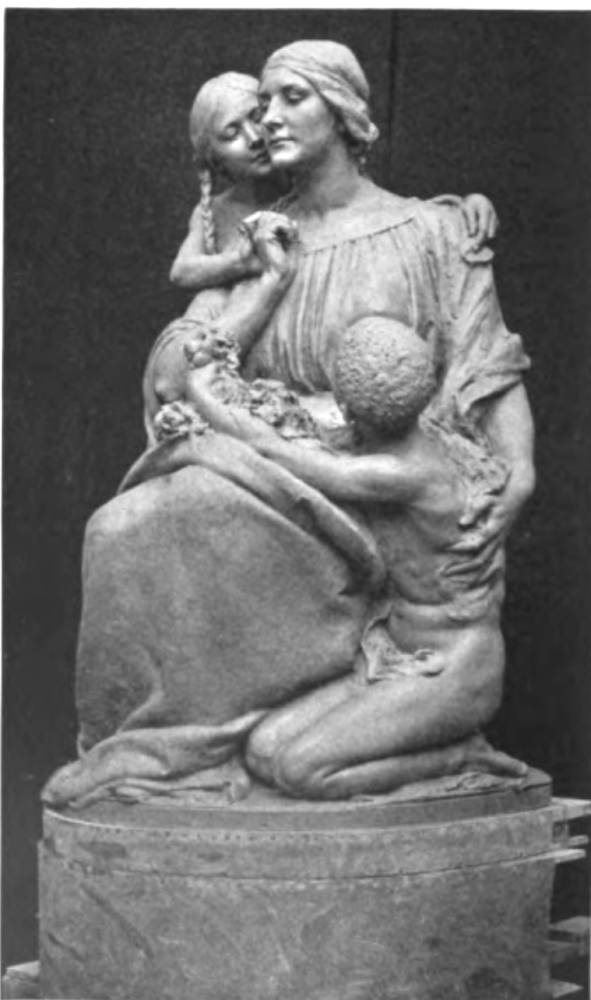

Left: Sketch model in clay for King Edward VII Memorial at Aberdeen by Alfred Drury, R.A., 1856-1944. Right: Unity. Source: The International Studio 50 (1913): 218-19.
Commentary from The International Studio

Peace form the Aberdeen memorial.
The reputation of Mr. Alfred Drury as one of the most able and original of our present-day sculptors will certainly be increased” by the excellence of his most recent work, the memorial to King Edward VII, which is to be erected at Aberdeen. In his design for this memorial he has with sound judgment aimed at an effect of dignified simplicity, and has avoided anything which might interfere with the monumental character of his work. He has treated the whole thing with an admirable sense of decorative propriety and with a true perception of what are the greater essentials in sculpture of this type. What he has specially kept in view in choosing his manner of treatment is the situation the memorial is to occupy—an open space surrounded” by very large buildings against which anything but simple and firmly planned forms would look trivial and unconvincing — and he has allowed the exigencies of the site to guide him in arranging not only the general masses of the monument but also the decorative details which have been introduced. Both the colossal statue of the King and the pedestal on which it stands are of granite; the flanking groups, Unity and Peace, are in bronze, but Mr. Drury has intentionally handled them with particular reticence and breadth so as to keep them in right relation to the largely designed figure of the King.
[You may use this image without prior permission for any scholarly or educational purpose as long as you (1) credit the Hathi Digital Library Trust and the Cornell University Library and (2) link your document to this URL in a web document or cite it in a print one. — George P. Landow]
Bibliography
“Studio-Talk.” The International Studio. 50 (1913): 218-20. Hathi Digital Library Trust internet version of a copy in the Cornell University Library. Web. 2 October 2017.
Last modified 17 October 2017